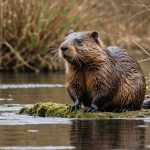The Importance of Pollinators in Urban Gardens
Pollinators play a crucial role in ensuring the health and productivity of ecosystems. They are essential for the maintenance of biodiversity and the successful reproduction of plants. In urban gardens, the importance of pollinators cannot be understated, as they enhance the beauty and vitality of these green spaces.
Pollinator importance is further emphasized when considering their impact on urban environments. The decline in pollinator populations can lead to reduced plant diversity and the loss of critical species, negatively affecting the ecological balance. Urban gardening serves as a refuge for various pollinators, offering them a habitat amidst the concrete landscapes. This not only supports the pollinator population but also contributes to the overall health of the urban ecosystem.
In parallel : Exploring how urban greening projects enhance bird diversity in uk city centers
Incorporating diverse plant species in urban gardens is one of the most effective ways to attract pollinators. Gardens with a variety of plants provide ample resources and environments for pollinators to thrive. This biodiversity, in turn, supports healthier and more resilient urban gardens. By planting a mix of flowers, herbs, and shrubs, urban gardeners can create a harmonious space that benefits both pollinators and the community. Such initiatives play a vital role in maintaining ecological stability within urban landscapes.
Innovative Design Strategies for Urban Gardens
Urban settings can pose challenges when it comes to establishing lush and vibrant garden design. However, innovative strategies unlock the potential of even the most compact spaces while supporting biodiversity. By embracing concepts like creative urban spaces, community gardening, and native plant landscaping, city dwellers can create thriving green zones.
Have you seen this : Confronting beaver-human interactions: creative solutions from uk conservationists
Vertical Gardens and Green Walls
In densely populated areas, making use of vertical space through vertical gardens and green walls transforms bare walls into thriving ecosystems. These installations not only improve air quality but also provide insulation. Embodying creative urban spaces, they allow for the integration of nature into limited ground areas. This strategy is effective in maximizing green coverage without requiring extensive land.
Native Plant Landscaping
Selecting native plants is pivotal for enhancing urban gardens. These flora are better suited for local climates, requiring less maintenance, and are powerful in habitat creation. Supporting local pollinators, native plantings help sustain the ecological balance within city environments. Careful selection and placement foster resilience and beauty in urban garden design.
Community Garden Initiatives
Community garden initiatives connect people through gardening. These projects empower residents to partake in urban greenery. By collaborating, they nurture communal bonds and improve local habitats. Examples span from simple raised beds to complex permaculture systems, showcasing garden design innovation and creative urban spaces that include everyone.
Recommended Plants to Attract Pollinators
Selecting the right pollinator-friendly plants can transform any garden into a vibrant haven for bees, butterflies, and other essential pollinators. To create a thriving environment, it’s essential to choose a variety of native species that naturally appeal to local wildlife. Native plants are adapted to local climates and offer the best nutritional sources.
Flowers That Attract Pollinators
To ensure you’re on the right track, consider blossoms like coneflowers, lavender, and sunflowers. These blooms are known for attracting a diversity of pollinators. Do remember that colour, scent, and flower shape play critical roles in plant selection for pollinators.
Seasonal Planting Strategies
A dynamic garden should provide blooms throughout different seasons. Start with early spring flowers such as snowdrops, move into summer with sunflowers, and end with autumn asters. Seasonal plant selection ensures that pollinators have a continuous food source.
Avoiding Pesticides
Maintaining a healthy garden without pesticides is crucial in supporting pollinator populations. Chemicals can harm beneficial insects and disrupt natural growth. Instead, look for organic pest control methods to keep your pollinator-friendly plants flourishing. This approach not only promotes a well-balanced ecosystem but also sustains pollinator health and diversity.
DIY Projects for Enhancing Pollinator Habitats
Engaging in DIY gardening projects not only enhances our outdoor spaces but plays a vital role in supporting biodiversity through habitat enhancement. By incorporating sustainable practices, you can transform your garden into a haven for pollinators.
Building Bee Hotels
Bee hotels provide solitary bees a safe, sheltered place to lay their eggs. To build one, you will need materials like untreated wood, hollow stems, or bamboo canes. Aim for varied hole sizes to accommodate different bee species. The construction should be robust to withstand weather conditions, and it should be placed in a sunny spot, facing south.
Creating Butterfly Gardens
Designing a butterfly garden involves choosing a variety of nectar-rich plants. Focus on native species such as asters, coneflowers, or milkweed, which cater to local butterfly populations. The layout should offer sunlit open spaces and wind protection to maximise butterfly activity and comfort.
Implementing Water Sources for Pollinators
Water is essential to pollinators, yet often overlooked in urban gardens. A simple solution is to place a shallow dish filled with water and stones to create a safe drinking area. This technique encourages visits by butterflies, bees, and other pollinators, supporting their crucial ecological functions.
Community Engagement and Education
In order to foster community involvement and promote environmental awareness, effective strategies are required. Local awareness campaigns are essential for pollinator conservation. Collaborating with various organizations enables the dissemination of information on the importance of pollinators. Initiatives like distributing educational materials, hosting seminars, or even engaging with social media can significantly raise public consciousness.
Children’s education plays a crucial role in preserving our ecosystem. Introducing educational programs through school garden initiatives proves highly effective. These programs allow students to directly observe and interact with nature, bolstering their understanding of ecological processes. This experiential learning fosters a deep appreciation for the environment and empowers the younger generation to advocate for sustainable practices.
Workshops and events held in collaboration with local entities can further strengthen community engagement. Partnering with gardening clubs, environmental groups, or educational institutions creates opportunities for workshops that instruct on sustainable gardening practices and pollinator habitats. Events such as pollinator-friendly garden walks or community planting days encourage active participation and foster community spirit.
These combined efforts ensure both immediate and long-term benefits for pollinator conservation and environmental awareness. Actively engaging and educating communities equips individuals with the knowledge and motivation needed to make impactful changes, safeguarding our ecosystems for future generations.
Ecological Benefits of Enhancing Pollinator Habitats
Enhancing pollinator habitats plays a critical role in urban environments, not only by boosting biodiversity but also in nurturing sustainable urban ecosystems. The ecological impact of urban gardens is profound as they serve as microhabitats supporting various species, including bees and butterflies, which are vital for pollination. These efforts lead to increased plant variety and health, contributing significantly to overall biodiversity.
While encouraging vibrant populations of pollinators, urban gardening adds to the environmental benefits by improving air quality and reducing urban heat. This reflects a commitment to sustainable gardening, which prioritises the ongoing health and stability of urban zones. As urban areas expand, integrating these practices supports a balance between development and nature, fostering environments where both humans and wildlife can thrive.
The economic advantages are equally noteworthy. By attracting pollinators, cities can see improved agricultural outputs from local gardens and reduced necessity for artificial pollination. This not only decreases costs but also enhances food security and sustainability. Furthermore, pollinator-friendly spaces increase property value and provide community educational opportunities, fostering a culturally rich and environmentally aware society. Encouraging these practices thus not only cultivates resilient ecosystems but also bolsters economic resilience.











